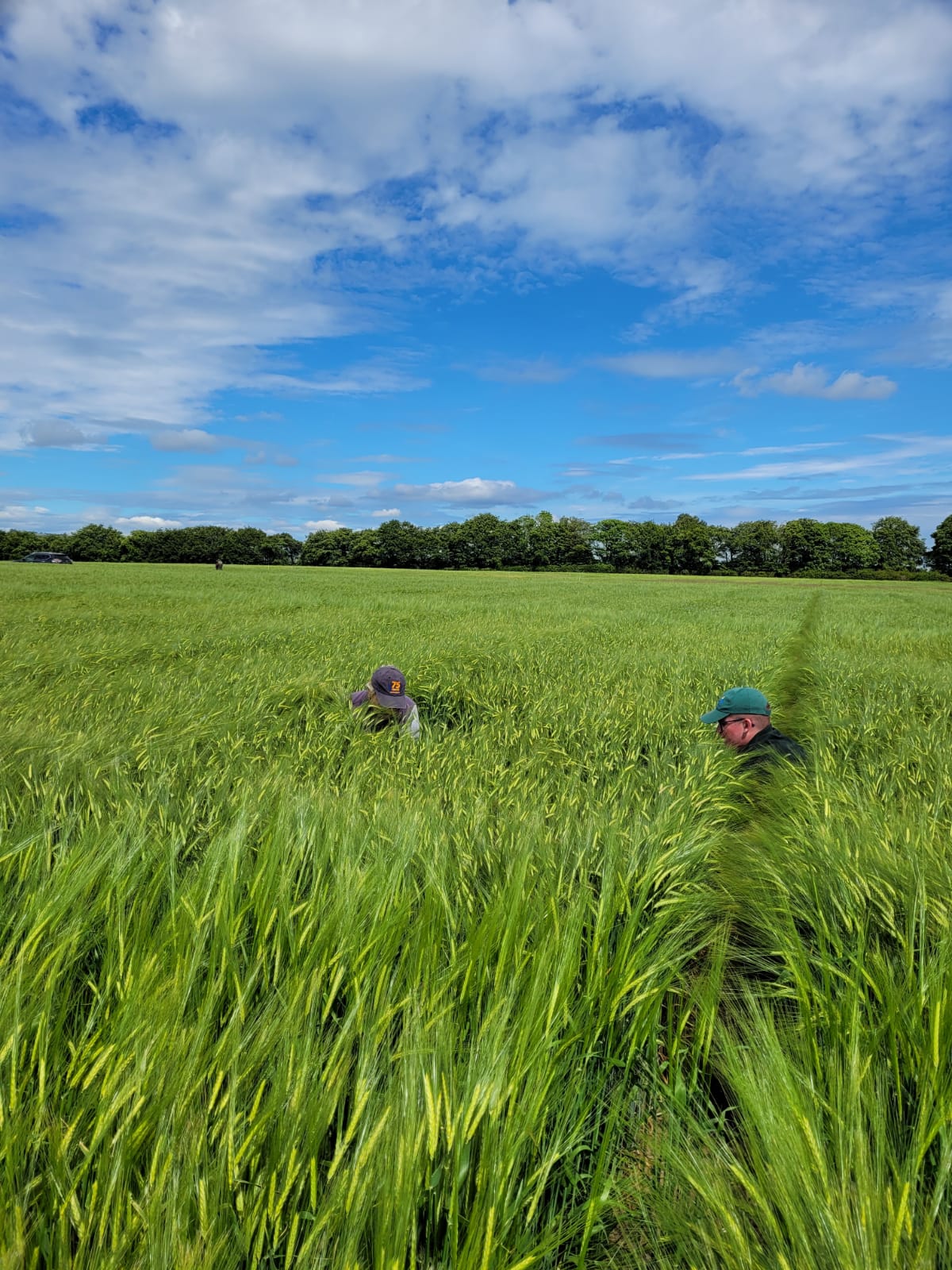
Update from Stevie Gray
There is a huge amount of work that goes into a trial plot, from planning at this time of year for the season ahead, drilling and establishing the plots, fertilising, and applying fungicide inputs throughout the year. In the end though, for many of our trial plots whether they are a success or not comes down to a factor out with our control, the presence and severity of disease.
For all of our fungicide work, July is the month that really lets us know if we will have good differences or not. Whilst for our members seeing Septoria in their crops can be disheartening having followed a robust fungicide programme taking care to try and get the timings correct, this is not the case for our trials team looking at the plots. This year we are fortunate to benefit from high disease pressure across most of our sites. In particular the Septoria levels in wheat, and the recent development of Ramularia in our spring barley plots, are giving us some interesting results.
High pressure seasons allow us to test the best new chemistry under a bit more pressure than we have seen over the last few years, and with newer products such as Univoq, Revystar and Adepidyn alongside each other it is great to see differences in level of control. With the trials team out regularly assessing the disease levels in the plots, that data will be used in combination with the yield data to drive variety and fungicide selection for the season ahead.